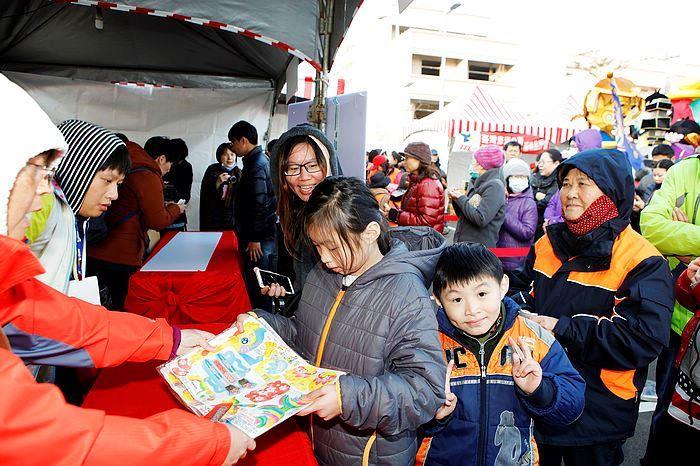 The Xinpu Lantern Festival Party, one of the celebrations of the 2017 Xinpu Sky Mending Lantern Parade, was held in the Arts Plaza in Xinpu on the evening of February 12. Singer Zhu Li-jing, dance troupe Honiya Yosakoi from Japan, and Tongliang Fire Dragon Troupe from Chongqing, China took turns to perform, whipping up an exciting atmosphere
The Xinpu Lantern Festival Party, one of the celebrations of the 2017 Xinpu Sky Mending Lantern Parade, was held in the Arts Plaza in Xinpu on the evening of February 12. Singer Zhu Li-jing, dance troupe Honiya Yosakoi from Japan, and Tongliang Fire Dragon Troupe from Chongqing, China took turns to perform, whipping up an exciting atmosphere
Honiya Yosakoi was previously invited to Taiwan for the Taiwan Lantern Festival held in Hsinchu in 2013. This year, dressed in bright colored costumes, they moved in unison with a lively rhythm. Their youthful vitality delighted the audience. The following Tongliang Fire Dragon Troupe came to Hsinchu for the first time. The fire dragon dance is a traditional performance that originated in the Ming dynasty. Iron is melted in a furnace and thrown up into the sky where sparks are created like shooting stars. Then, the dragon runs through the 1500℃ sparks. The red light and the steam gave people a feeling that a wild dragon is flying through the air. All the audience was impressed by the show.
The last performance of the event was presented by singer Zhu Li-jing, who was born in Guanxi Township. This is the first time she sang the Hakka song “Tung blossom.” Her uplifting and soothing voice brought positive energy to all the visitors.
Magistrate Chiu repeated the slogan: “Sky lanterns in the north, beehive firecrackers in the south, and moving lanterns in Xinpu.” In 2011, the county government expanded the scale of Xinpu’s Lantern Festival event, an event that originated over 75 years ago in the Japanese Colonial Period. The aim was that, through the active involvement of the local society, the huge Dragon King Lantern from Aomori Nebuta Festival in Japan, and a troupe from China, this well-known Lantern Festival celebration would not only display the spirit of traditional Hakka culture, but it would also boost the local tourism industry.